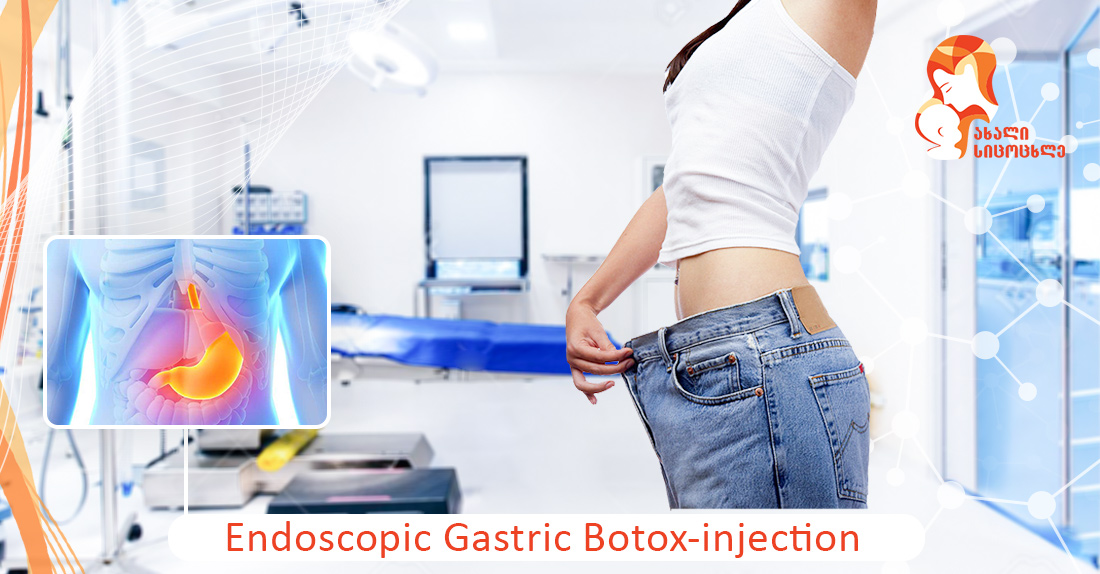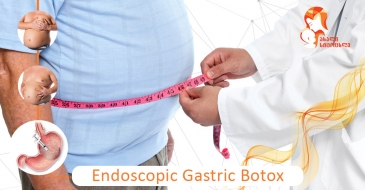
Gastric Endoscopic Botox Is One Of The Best Methods To Fight Against Overweight
In the interview you will learn the following information:
- Excess weight;
- Advantages of gastric endoscopic Botox;
- Another successful botox-injection was conducted in the “New Life” Clinic.
Fighting excess weight has become an invincible problem for many people around the world. Often this problem is the cause of too many diseases and it can even become life-threatening.
To defeat excess weight, medicine has developed bariatric surgery, which involves a variety of surgical interventions and is one of the most effective directions in this regard.
The clinic "New Life" has been successfully conducting sleeve-gastrectomy with a bloodless, laparoscopic method for years. Clinical bariatric surgeons can recall numerous successful outcomes. For example, there have been cases where several patients have lost 100 kg and too many said goodbye to 60-75 kg.
For patients who want to lose weight from 15 to 35 kg, in addition to sleeve gastrectomy, the clinic has introduced several methods of weight loss, which are performed endoscopically (Gastric endoscopic ballooning and Botox- injection). By this method, many patients lost extra kilograms and they continue to live without excess weight.
Another successful gastric endoscopy Botox-injection was performed in our clinic, about which Irakli Paichadze, surgeon-endoscopist of the “New Life “Clinic, is talking to us.
- What is gastric endoscopic Botox- injection?
- Gastric endoscopy Botox injection is an endoscopic method of weight loss (without surgery). By this method, botulinum toxin is introduced into the stomach, which causes a reduction in gastric volume and the formation of temporary gastroparesis (late emptying of the stomach from the contents).
- What are the advantages of gastric endoscopic Botox compared to other methods?
- Gastric endoscopy Botox has several advantages, in particular:
- Is performed on an outpatient basis;
- Manipulation is endoscopic;
- Is painless;
- Is less traumatic;
- Reduces appetite and feeling of hunger;
- It is a way of preventing diseases caused by excess weight;
- Does not damage the gastric mucosa;
- The patient returns to a healthy weight;
- There is no need for prolonged rehabilitation.
- How is referred manipulation carried out?
- Gastric botox-injection is performed endoscopically, under short-term intravenous anesthesia. Endoscopically, with a special injection tool, a certain amount of botulinum toxin (Botox, Disport, or another alternative mean) is injected into the relevant areas of the gastric mucosa. Upon awakening, the patient feels the result, in particular feeling of fullness and decreased appetite.
- Approximately how many kilograms can be lost and when will the result be noticed?
- This intervention is recommended for those who want to lose 15-35 kilograms. The patient is under the supervision of an endocrinologist for several months, decreases in a healthy way, and the result is long-term. The weight loss process starts from the day of the patient's discharge, and the final result is achieved in about 5-6 months.
- What can you tell us about your patient, what was her condition in the beginning and how does she feel now?
- A 27-year-old girl, who weighed 120 kg, applied to our clinic with the problem of obesity.
The patient had:
- Progressive weight gain;
- Shortness of breath and restriction of movement during physical activity;
- Swelling of the lower extremities;
- Decreased working ability;
Treated ineffectively with a dietitian.
After special training, the girl underwent gastric endoscopic Botox- injection by bloodless, laparoscopic method. Her condition is satisfactory. From the day of discharge, the patient experienced a decrease in appetite and a constant feeling of fullness. She is currently under the supervision of an endocrinologist who will select a special diet after some time.
- How is the postoperative period and when will the patient return to a normal rhythm of life?
- Gastric endoscopy Botox-injection, as I mentioned, is not traumatic at all, therefore, does not require a rehabilitation period. The postoperative period covers only one day. Our patient felt active within a few hours of this intervention, had no postoperative pain and complications. From the day of discharge, she has returned to the usual rhythm of life, and very soon she will achieve the desired result.
Wish you health!










